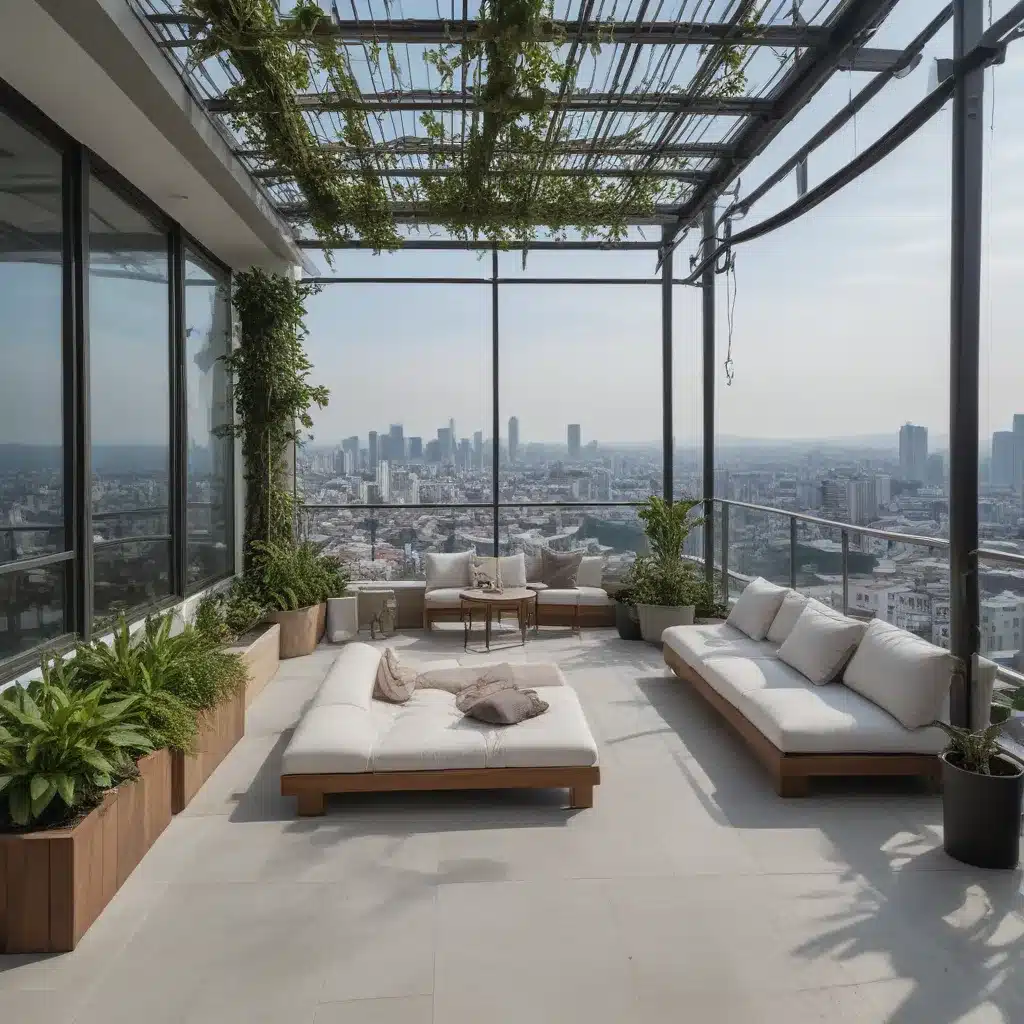
Rediscovering the Forgotten Overpass
As I strolled through the bustling streets of Seoul, I couldn’t help but notice a curious green ribbon snaking its way above the busy thoroughfares. Intrigued, I decided to venture up the stairs and onto this elevated oasis – the Seoullo 7017 Skygarden.
Once a forgotten highway overpass, this remarkable urban transformation has breathed new life into the heart of the city. Designed by the Dutch architecture firm MVRDV, the Skygarden is a 983-meter long public park that showcases an astounding 24,000 plants, trees, shrubs and flowers from 228 different species.
As I strolled along the lush pathways, I couldn’t help but feel a sense of wonder and tranquility. The air was filled with the soothing fragrance of blooming flora, and the gentle rustling of leaves provided a serene soundtrack to my urban adventure. It was hard to believe I was still in the bustling heart of Seoul, a mere stone’s throw from the city’s main train station.
Reconnecting with Nature in the City
One of the most striking aspects of the Seoullo 7017 Skygarden is its ability to transport visitors to a verdant oasis, right in the middle of the concrete jungle. As described in Time magazine, the elevated park features “family-friendly cafés, gardens, and even stations for relaxing foot baths” – a perfect respite from the hustle and bustle of the city.
As I wandered through the various themed gardens, I was struck by the incredible diversity of plant life on display. From towering trees to delicate wildflowers, the Skygarden is a veritable “plant village” that celebrates the incredible richness of Korea’s natural heritage. As the MVRDV website notes, the park’s 645 tree pots house 50 different plant families, showcasing an astounding 228 species and sub-species.
It was fascinating to learn that the Skygarden was designed not just as a pretty public space, but also as an “urban nursery” – a place where new plants and trees can be cultivated and then transplanted to other green spaces around the city. This innovative approach not only enhances the immediate surroundings, but also has the potential to create a greener, more livable Seoul for generations to come.
Connecting the City, One Step at a Time
As I made my way along the Skygarden’s winding paths, I couldn’t help but marvel at the ingenious design that seamlessly integrates the elevated park with the city below. As Topos magazine notes, the Skygarden is connected to the surrounding neighborhoods through a network of “new bridges, stairs, lifts, and escalators” – making it easily accessible to both locals and visitors alike.
This clever integration with the city’s infrastructure is a testament to the project’s holistic approach to urban renewal. By repurposing a forgotten highway overpass, the Skygarden not only provides a beautiful green space, but also enhances the connectivity and walkability of the entire area. It’s a shining example of how abandoned or neglected urban spaces can be transformed into vibrant, people-centric hubs.
As I descended the stairs and rejoined the bustling streets of Seoul, I couldn’t help but feel a renewed sense of energy and optimism. The Seoullo 7017 Skygarden has not only given new life to a forgotten corner of the city, but also serves as a powerful symbol of Seoul’s commitment to sustainability, green spaces, and a more livable urban future.
Illuminating the Night Sky
But the Seoullo 7017 Skygarden’s magic doesn’t end when the sun goes down. As Time magazine describes, at night the elevated park is transformed into a “glowing ribbon of purple,” with the illuminated pillars casting a mesmerizing glow over the cityscape.
I decided to revisit the Skygarden after dark, and I was amazed by the otherworldly spectacle that unfolded before my eyes. The vibrant purple lighting created a serene, almost ethereal atmosphere, providing a striking contrast to the bustling city below. It was as if the Skygarden had been transported to a different realm, a peaceful oasis suspended in time and space.
As I strolled along the illuminated pathways, I couldn’t help but feel a sense of wonder and tranquility. The Skygarden had taken on a whole new character, becoming a place of quiet contemplation and introspection. It was the perfect antidote to the sensory overload of the city, a chance to pause, reflect, and reconnect with the natural world.
Embracing Seoul’s Greener Future
The Seoullo 7017 Skygarden is more than just a beautiful public space – it’s a symbol of Seoul’s bold vision for a greener, more livable city. By reclaiming a forgotten piece of infrastructure and transforming it into a vibrant, nature-filled oasis, the city has sent a clear message: the future is green, and it’s within our reach.
As I explored the Skygarden, I couldn’t help but feel a sense of hope and optimism for the future of Seoul. This incredible project has not only enhanced the city’s aesthetic appeal, but also provided a much-needed respite from the concrete and steel, nurturing both the body and the soul.
If you find yourself in Seoul, be sure to set aside some time to visit the Seoullo 7017 Skygarden. Whether you’re looking to reconnect with nature, enjoy a peaceful stroll, or simply take in the city’s stunning nighttime vistas, this remarkable urban oasis has something for everyone. And who knows – you might just be inspired to bring a little bit of the Skygarden’s magic back home with you.
So why not plan your next trip to Hotel Stay Inn Seoul and get ready to experience the restorative power of the Seoullo 7017 Skygarden for yourself? I promise, it’s an adventure you won’t soon forget.

